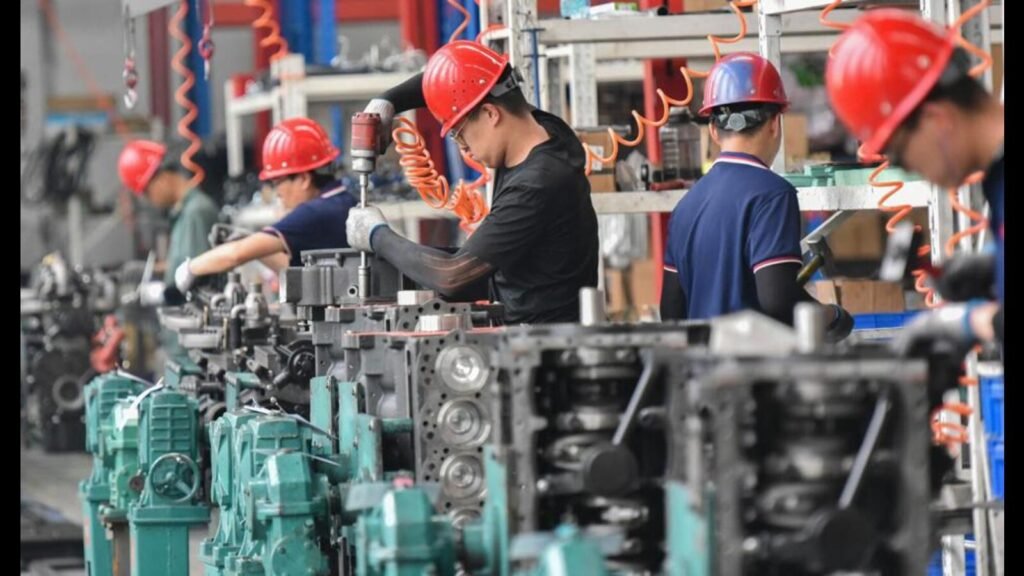
The great winner of this century has been China. At the turn of the century, its gross domestic product (GDP) stood at $1.2 trillion, and, today, it is $18.7 trillion — essentially, a multiplier of 15.5 in 25 years. India’s creditable rise, of 8.5 times (from $485 billion to $4.1 trillion) in the same period dwarfs in comparison, given that, in 1980, China’s GDP was approximately the same as India’s ($191 billion dollars to $186 billion). As a non-China scholar, in this piece, I offer an outside-in view on this unprecedented achievement.

Fix the basics: In 1978, on taking charge as the paramount leader — the informal designation used to refer to the most important political figure in China — Deng Xiaoping made several strong moves to fix basics such as agriculture (and water), health care, and primary education. Collective farming was abolished and replaced by a household responsibility system where farmers made production decisions and could sell their surplus. By 2000, the value added in the country’s agriculture sector surged from $137 billion to $370 billion; cereal yields increased from 3,000 kg per hectare to 4,800 kg per hectare and the share of the workforce in agriculture reduced from 68% to 50%. It stands at 22% today. Water use was dramatically reduced by a shift to sprinkler and drip irrigation away from flood irrigation. In 1986, the compulsory education law was enacted, introducing nine years of education with a focus on basic literacy and numeracy. Literacy rates went up from 65% to 90% by the 1990s. In health care, the focus under Chairman Mao Zedong on preventive campaigns gave way to significant market reforms that were accelerated after the Severe Acute Respiratory Syndrome (SARS) outbreak in 2003, transforming eventually into universal health insurance coverage.
Build manufacturing: From 2000 onwards, the focus was to build manufacturing by using the cheap labor released from the farm sector because of increased agricultural productivity. Labor was allowed only in cities for work (Hukou system), strictly managed, housed in dormitories with poor rights, tight discipline, and yet with incomes higher than in agriculture. Weaning its way into the World Trade Organization (WTO) with US assistance, China embarked on an export-led growth strategy based on labour-intensive manufacturing. The Center made massive investments in infrastructure (roads, ports, airports, power) but the provinces were asked to attract foreign manufacturing to offshore production to China by offering incentives and land.
The objective was to buy skills (accepting wafer-thin margins) but allow multinationals (MNCs) to provide the machinery and train their workforce. MNCs made bumper profits and retained their intellectual property but were attracted to make China the keystone of their global supply chains. For example, Apple’s EBITDA margin was 3% in 2000, but grew to 30% in 2010 by moving manufacturing to China. Apple trained around 29 million workers, provided the cutting-edge machinery, and pushed Foxconn (its tier-2 supplier) to create the best global supply chain, delivering to exacting standards at very low margins. China’s share of global manufacturing grew from 6% in 2000 to 20% by 2010.
Moving up the value chain: Till 2010, China remained happy to trade margin for skill development. But as the manufacturing scale grew and wage pressure developed, it started to move up the value chain. Foreign companies were subject to tougher joint venture rules and intellectual property theft had become common knowledge. But the heavy profits American companies were making ensured that their leaders remained against US governmental interference that could upset their gravy train.
By 2015, bipartisan concern aimed at China’s rapid ascent began emerging. Offshoring was hurting manufacturing jobs, with defunct manufacturing communities becoming restive — a political opportunity that allowed Donald Trump to make his presidential bid.
Meanwhile, China continued building on its successes, continuing massive infrastructure build-outs but now also focusing on building advanced capabilities. It kept domestic consumption low with savings redirected into infrastructure and awarded competitive subsidies to advance in key areas. Its universities moved up in rankings: In 2000, no Chinese university featured in the top 200 of global rankings, but by 2020, there were two in the top 20.
Investments in technology, advanced manufacturing (solar panels, lithium batteries, electric vehicles, telecom equipment, and smartphones), critical minerals, defense, and surveillance grew. By 2020, China had around 30% share in global manufacturing, becoming most countries’ largest trading partner (replacing the US), running surpluses, building foreign exchange reserves, and becoming a significant holder of US treasury and foreign assets.
Competing for supremacy: China has its own challenges, the most profound ones being the shrinking of its population — from 1.4 billion now, it is projected to have just 635 million by 2100 — slowing of its economy with poor finances of provinces, inefficient State-owned enterprises (SoE), and a real estate glut.
However, today, China has a GDP of $18.7 trillion, is responsible for 34% of global manufacturing, 17% of global GDP, but remains frugal at 12% of global consumption domestically (a 5% implicit subsidies to manufacturing). China, unlike western democracies, has always operated like a company, under the broad direction of the State — and under President Xi Jinping, the State’s control has become absolute.
In consolidating power, Xi unleashed an anti-corruption drive targeting rivals, cleansed the bureaucracy, and took down tech giants such as Jack Ma and the property conglomerates. He removed the two-term restrictions for Chinese presidents and centralized all power with carefully chosen top lieutenants.
To see China compete for global supremacy, he has ensured very high foreign exchange reserves and has grown China’s power economically (as a manufacturing hub), militarily, technologically (AI, robotics, solar, quantum computing, lithium batteries, in space, in nuclear), and academically (with its research and universities). It has been steadily reducing its dependence on the US (now down to being China’s third-biggest trade partner after decades of remaining at the top) and the West, and has made their dependence on China increase on critical minerals, supplier of key products and as a critical part of their supply chains. And, increasingly, as a market for vehicles and luxury goods.
India must, without trust but conscious of its economic interest, fully engage with China and the US. India must get fit for competition by removing dreadful constraints of all kinds on business and use its tech stack to have a digitized and friendly business environment. But it cannot avoid fixing water use, increasing agriculture productivity and fixing primary education and health care to advance to a Viksit Bharat.
Janmejaya Sinha is chairman, BCG India. The views expressed are personal




